XIX. The scientific and intellectual environment of the 20th century, Abbadia adapter
French Revolution
In the short term it can be said that the influence of the French Revolution on Antoine Abbadia was counterproductive, because for this reason Antoine's father was exiled, which caused our man to be born in Ireland in 1810. But the Revolution also had a positive influence on science, and from this perspective, although in the long run, the French science of the time developed dramatically. And it reached the time of Abbadia, with great influence in the life of Abbadia, since one of the greatest passions of Abbadia was the same science.
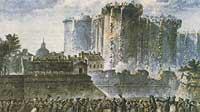
The French Revolution removed the last traces of medieval feudalism and attached great importance to science. The direct consequence of this environment is Lazare Carnot, famous father of thermodynamics, or Lavoisier, the most famous driver of modern chemistry. In this environment it was also carried out the normalization of weights and measures so important in the industrialized world today by implementing a metric decimal system. From the hand of the Revolution are born the new Educational Institutions, from which came the chemist Gay Lussac or the physicist Fresnel, so known.
Later, in the Napoleonic era, the new status achieved by science continued. During the war with England, France suffered a harsh siege, and the direct consequence of the blockade was the huge lack of soda and sugar. But this gave a great boost to Chemistry in France, which began to artificially produce what denied the blockade. Chemistry, which for thirty years was the most advanced scientific branch of the European continent, was especially promoted.
Then the continuing war was going to cause great harm to the social and scientific system, but in the second case science found a powerful partner in the industry and have been together until today.
Abbadia's industrial revolution and travel
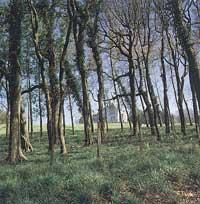
The failure of the “Age of Reason” created by the French Revolution began with the first institutions and actions of modern capitalism. Between 1830-1870 productivity grew greatly. Markets expanded steadily, and in that environment geographic and geological journeys were of great importance to carry out colonizations of new lands. Our Abbadia participated in one of them going to Brazil to carry out studies of “physical geography” and with his brother to Ethiopia and Egypt Garai, where he spent 11 years. These trips covered most of Abbadia's youth. France was awarded the Grand Gold Medal awarded by the Geographical Society “Societé Geographique de France”.
In the dynamic atmosphere of that time there were advances that we consider important today. They invented the telegraph, creating the industrial application of the new electric science. Inventions like railroad, steam ship, etc. provoked a new class: Engineers and Technical Schools of Engineering Training. Science began to become institutionalized with all its consequences. This institutionalization was well known by Abbadia, being elected partner of Paris for the “Académie des Sciences”, or when the academy itself participated in the geography of “Bureau des Longitudes”, to then be director of both.
XIX. Last years of the 20th century: science and society
In 1870 Abbadia was 60 years old and did not see the new century that died in 1897. During this time capitalism appears as a mature but contradictory system. The productive forces developed them enormously, but unemployment did not cease to grow. It spread across all territories, but it was a constant war.
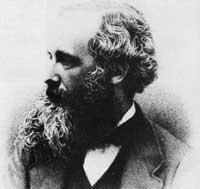
XIX. In the last quarter of the 20th century, on a scientific level, a hidden revolution was developing. Electrical and magnetic phenomena, incompatible with Newton's atomics theory, were increasingly important, causing an unprecedented crisis in science. The solution to this crisis was given in 1905 through the so-called Theory of Relativity by Albert Einstein. These times were those of the furnaces of manufacture of steel and steel, and those of the advances of the Electromagnetism and of the applied technologies that derive from it.
In these subjects one could appreciate the abundance of scientific laboratories anywhere. Germany ran all scientific fields and German became a scientific language. It was then that science became the tool of capitalism. The behavior of romantic scientists (if science was to be liberating from a science that was linked to the social consequences of science) was discarded, being subordinated to industrial production. From now on, science became a “neutral” trade, although we all know it was used for science, exploitation and war. The era of romantic and wise scientists ended and technocrats began. Antoine Abbadia can be placed among the romantic.
Apparently, for him, science was a tool to better observe and know Nature. When Abbadia died, his understanding of science can be said to have buried him.
Being a romantic scientist, he was interested and we will talk about the different fields of knowledge. Some of the areas Abbadia studied are: Magnetism, Astronomy and Geography. As we have already mentioned the geographical trips, we will expose their experiences in other areas.
Antoine Abbadia and XIX. End of the century: time of magnetism
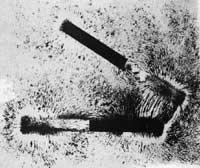
Faraday explained the relationship between Magnetic and Electric through experimentation. Faraday defined for the first time in the West the concept of zone (entity that occupies all the slits of space). At his death (1867) the Scottish physicist James Clerk Maxwell took the witness. This, the electromagnetic field that Faraday theorized, explained mathematically, turning the field that was previously mysterious into useful and manipulable. In a few years physicist Hertz discovered how to artificially produce the vibrations of the electromagnetic field and opened the way to wireless communications.
The epoch of the electromagnetic wave came and Newton's mechanical mastery declined in favor of the new physics. Electromagnetic technology based on the concept of the area spread all over the world. But there was a problem that arose so strongly in the new physics. If the electromagnetic field is a set of vibrating electromagnetic waves, what is the medium in which these vibrations occur? The mechanics are very clean about it: if there are vibrations it is because a support is vibrating. What is the vibrating medium in electromagnetism? Nobody knew what that mysterious environment was, because it was never detected. That ghost was called “etere.” To answer this problem, Albert Einstein later wrote the Theory of Relativity.
Our Antoine Abbadia witnessed that new Physics. He was a student of the prestigious physicist Arago, during the study of his undulating identity on light. These studies would later be related to the discovery of ether. At the age of 26, when Faraday was 45 and the area concept was newborn, Abbadia was fascinated by magnetism, falling into pure metaphysics. No wonder, therefore, that Abbadia considers magnetism as a resource for predicting life.
Abbadia’s fondness appears in the letter published in the magazine “Le Courrier de Bayonne” (27-III-1897). This writing explains Abbadia's faith in magnetism and explains how what a sleepwalker predicted two years earlier was fulfilled. However, from a scientific point of view you have to evaluate your trip to Brazil to learn magnetism.
However, although Abbadia liked all sciences, the one he loved most, along with Basque, was astronomy.
Abbadia and astronomy
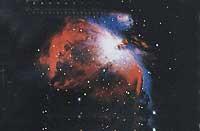
To identify the abbadia with a branch of science, certainly, it must be with astronomy.
XIX. At the beginning of the 20th century, thanks to the work of Herschel, the Sun of our Solar System, which was one of the billions of normal stars, was already widespread among scholars. They even knew that all the stars formed a grand universe in an ellipsoidal way. When Abbadia was 30 years old, the distances between the stars around the Solar System were already calculated with great precision by paralysis.
In 1870 Abbadia installed a beautiful telescope in the castle of Hendaia. By then the universe was considered to be composed of 300,000 million stars, and that the size of this giant universe was 8,000 light years on the longest axis and 1,500 light years on the shortest axis. To calculate this size it was essential to calculate the exact distances to the stars around us, for which the stars should be placed in exact position in the kneading. This type of work could be done, although to a lesser extent, with the tooling that it had in the house of Hendaia.
Although there is no written document, it could be thought that in the Basque Country of the time (in the Second Carlist War and between a thousand sufferings and confrontations) there was a Basque looking towards gold, trying to find in the cosmos answers that he did not find on earth. Knowing that the Basque was aware of how Euskal Herria valued the history he lived in those times seems to me a disaster. Still today, our beloved People, who often keep looking at their navel, because in the galaxy called the Milky Way, composed of 300 billion worlds, we would be centers ourselves. With Abbadia, a pioneer in the mentality of the cosmos, we have the intellectual debt that today we deal with astrophysics and cosmology, which in the most difficult moments made it possible to act in the mentality of thought.
Abbadia XX. from the perspective of the century
The life and activities of Abbadia, XX. Since the 20th century, they lead us to some conclusions. On the one hand, Abbadia was not a deep scientist. I mean that, despite being a scientific material, it was not highlighted in any field: either in astronomy, geography or physics. Instead of being analytical and specialist, it seems that science interested him as culture. He turned to synthetic studies rather than analytics. That is, the latest news of science attracted especially its interest.
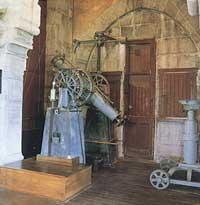
Another question that arises is why, being a passionate scientist and vascophile, did not link these two fields? Why didn't science work in Basque to extend your scientific knowledge to the people?
On the other hand, we must not forget that at that time the Basque language was mainly used to speak and not to write. Unified Basque was not yet substantiated and in our country Basque had no tradition in scientific matters. How to write scientific articles or books without readers? Moreover, how to write if there were no rules and customs to write?. Still today, there is nothing more to see the difficulties of writing and scientific reading in detecting the obstacles you would encounter.
Third idea to finish. Abbadia's life and work have marked an interesting path. This road is a modern message, that is, it is possible to be euskaldun (with Basque) and to be formed and dressed in cutting-edge themes (from the scientific point of view) in each historical epoch. Abbadia loved his people very much, but also the science of the time. Both trends led him to live in half. Culturally (as far as the culture of science is concerned) he lived in a backward country aligned with the most advanced science (but far from the daily practice of the Basque Country). How to combine both aspects?
In the history of Euskal Herria the struggle between these two aspects has always been hard. Many of the peoples have had to choose one of the two, and many times that dichotomy has reached politics and daily life. Modernity or vasquism? Popular or scientific culture? Through these lines, those who do not believe in this dichotomy must claim the precursor role of Abbadia. It is possible to be a vascophile, to love this people and to be progressive, wise and science-loving. The seed that Abbadia sowed corresponds to us.
Buletina
Bidali zure helbide elektronikoa eta jaso asteroko buletina zure sarrera-ontzian











